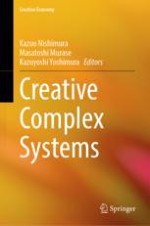2021 | OriginalPaper | Buchkapitel
21. Ignorance, Creation, Destruction
verfasst von : Sander van der Leeuw, Masatoshi Murase
Erschienen in: Creative Complex Systems
Verlag: Springer Nature Singapore
Aktivieren Sie unsere intelligente Suche, um passende Fachinhalte oder Patente zu finden.
Wählen Sie Textabschnitte aus um mit Künstlicher Intelligenz passenden Patente zu finden. powered by
Markieren Sie Textabschnitte, um KI-gestützt weitere passende Inhalte zu finden. powered by
